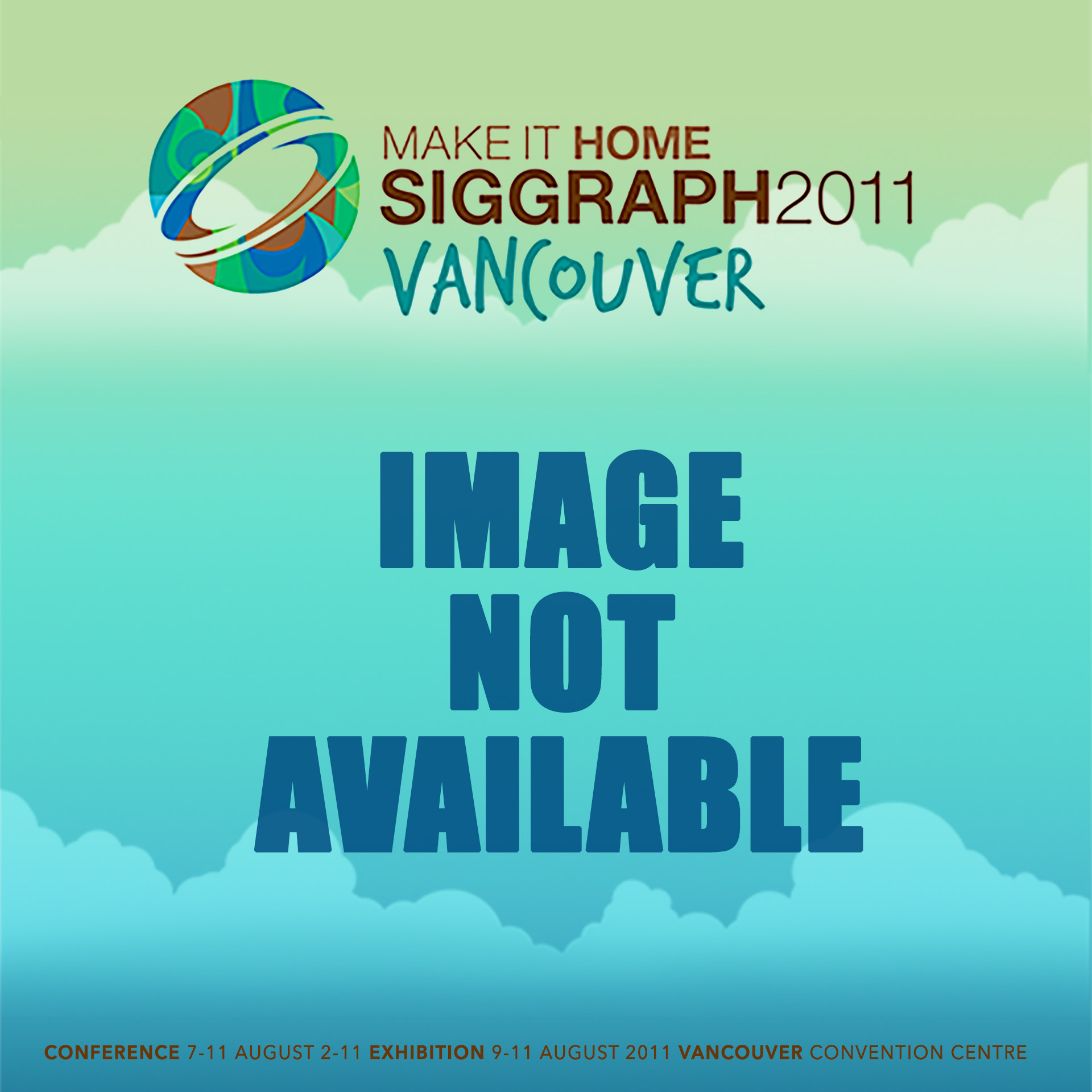“Color compatibility from large datasets” by O’Donovan, Hertzmann and Agarwala
Conference:
Type(s):
Title:
- Color compatibility from large datasets
Presenter(s)/Author(s):
Abstract:
This paper studies color compatibility theories using large datasets, and develops new tools for choosing colors. There are three parts to this work. First, using on-line datasets, we test new and existing theories of human color preferences. For example, we test whether certain hues or hue templates may be preferred by viewers. Second, we learn quantitative models that score the quality of a five-color set of colors, called a color theme. Such models can be used to rate the quality of a new color theme. Third, we demonstrate simple proto-types that apply a learned model to tasks in color design, including improving existing themes and extracting themes from images.
References:
1. Chevreul, M. 1839. The Principles of Harmony and Contrast of Colors and Their Application to the Arts.Google Scholar
2. Cohen-Or, D., Sorkine, O., Gal, R., Leyvand, T., and Xu, Y.-Q. 2006. Color Harmonization. ACM Transactions on Graphics (Proc. of ACM SIGGRAPH) 25, 3, 624–630. Google ScholarDigital Library
3. Csurka, G., Skaff, S., Marchesotti, L., and Saunders, C. 2010. Learning Moods and Emotions from Color Combinations. In Proc. ICVGIP. Google Scholar
4. Datta, R., Joshi, D., Li, J., and Wang, J. Z. 2006. Studying Aaesthetics in Photographic Images Using a Computational Approach. In Proc. ECCV, 7–13. Google Scholar
5. Easley, D., and Kleinberg, J. 2010. Networks, Crowds, and Markets. Cambridge University Press.Google Scholar
6. Friedman, J. H., Hastie, T., and Tibshirani, R. 2010. Regularization Paths for Generalized Linear Models via Coordinate Descent. Journal of Statistical Software 33, 1 (2), 1–22.Google ScholarCross Ref
7. Gage, J. 1999. Color and Culture: Practice and Meaning from Antiquity to Abstraction. University of California Press.Google Scholar
8. Goethe, J. 1810. Theory of Colors.Google Scholar
9. Granger, G. W. 1952. Objectivity of Color Preferences. Nature 170, 4332, 778–780.Google Scholar
10. Hansen, N. 2006. The CMA evolution strategy: a comparing review. In Towards a new evolutionary computation. 75–102.Google Scholar
11. Heer, J., and Bostock, M. 2010. Crowdsourcing Graphical Perception. In Proc. CHI, 203–212. Google Scholar
12. Itten, J. 1973. The Art of Color.Google Scholar
13. Jacobs, R. A., Jordan, M. I., Nowlan, S. J., and Hinton, G. E. 1991. Adaptive Mixtures of Local Experts. Neural Computation 3, 79–87. Google ScholarCross Ref
14. Jones, D. R., Perttunen, C. D., and Stuckman, B. E. 1993. Lipschitzian Optimization Without the Lipschitz Constant. J. Opt. Theory. Appl. 79, 3 (Oct.). Google ScholarCross Ref
15. Krause, J. 2007. Color Index 2.Google Scholar
16. Lalonde, J.-F., and Efros, A. A. 2007. Using Color Compatibility for Assessing Image Realism. In Proc. ICCV.Google Scholar
17. Li, C., and Chen, T. 2009. Aesthetic Visual Quality Assessment of Paintings. J. Sel. Topics in Signal Processing 3, 2, 236–252.Google ScholarCross Ref
18. Marlin, B. M., and Zemel, R. S. 2007. Collaborative Filtering and the Missing at Random Assumption. In Proc. UAI.Google Scholar
19. Matsuda, Y. 1995. Color Designs. Asakura Shoten.Google Scholar
20. Meier, B. J., Spalter, A. M., and Karelitz, D. B. 2004. Interactive Color Palette Tools. IEEE Computer Graphics and Applications 24, 3, 64–72. Google ScholarDigital Library
21. Moorthy, A. K., Obrador, P., and Oliver, N. 2010. Towards Computational Models of Visual Aesthetic Appeal of Consumer Videos. In Proc. ECCV. Google ScholarDigital Library
22. Munsel, A. 1921. A Grammar of Color.Google Scholar
23. Nemcsics, A. 2003. Coloroid Colour System. In Hungarian Electronic Journal of Sciences.Google Scholar
24. Neumann, L., Nemcsics, A., and Neumann, A. 2005. Computational Color Harmony Based on Coloroid System. In CAGVI. Google Scholar
25. Ostwald, W. 1932. Color Science, Vol 1.Google Scholar
26. Ou, L.-C., and Luo, M. R. 2006. A Color Harmony Model for Two-Color Combinations. Col. Res. Appl 31, 5, 191–204.Google ScholarCross Ref
27. Ou, L.-C., Luo, M. R., Woodcock, A., and Wright, A. 2004. A Study of Colour Emotion and Colour Preference. Part III: Colour Preference Modeling. Col. Res. Appl 29, 5, 381–389.Google ScholarCross Ref
28. Palmer, S. E., and Schloss, K. B. 2010. An ecological valence theory of human color preference. Proc. Nat. Acad. Science 107, 19, 8877–82.Google ScholarCross Ref
29. Schloss, K. B., and Palmer, S. E. 2010. Aesthetics of color combinations. In Human Vision and Elec. Imaging XV, vol. 7527.Google Scholar
30. Szabó, F., Bodrogi, P., and Schanda, J. 2010. Experimental Modeling of Colour Harmony. Col. Res. Appl 35, 1, 34–39.Google ScholarCross Ref
31. Tibshirani, R. 1996. Regression Shrinkage and Selection Via the Lasso. Royal. Statist. Soc B 58, 1, 267–288.Google ScholarCross Ref
32. Tokumaru, M., Muranaka, N., and Imanishi, S. 2002. Color Design Support System Considering Color Harmony. In Proc. FUZZ-IEEE, 378–383.Google Scholar
33. Wang, B., Yu, Y., Wong, T.-T., Chen, C., and Xu, Y.-Q. 2010. Data-Driven Image Color Theme Enhancement. ACM Transactions on Graphics (Proc. SIG. Asia) 29, 6. Google ScholarDigital Library




